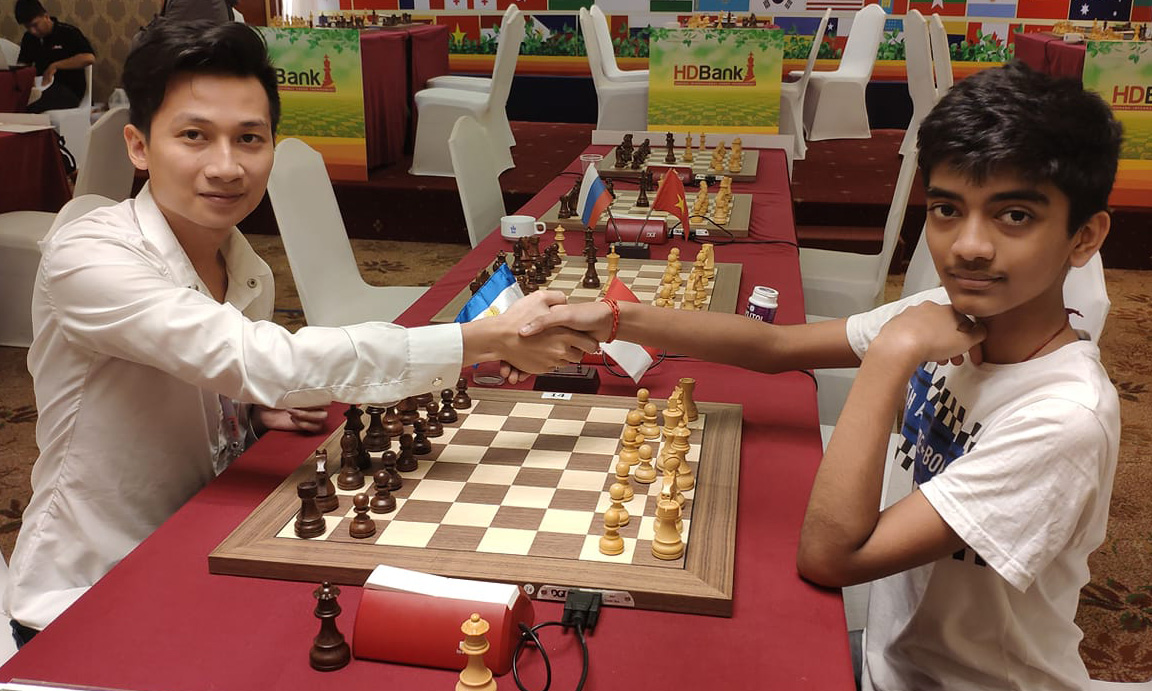Chess is one of the purest tests of human logic and creativity. But in the age of powerful computers, even this ancient game faces a modern problem: cheating with chess engines like Stockfish.
Stockfish is a free, open-source program that can calculate millions of positions per second and play almost perfectly. It’s great for training and analysis — but when used during a game, it becomes the most common cheating tool in chess today.
This article explains how people use Stockfish to cheat, what patterns give them away, and what platforms do to stop them. It’s not about teaching how to cheat — it’s about helping players and organizers understand the methods so they can protect fair play.
1. Using a Second Device During Online Games
The simplest and most common way people cheat online is by running Stockfish on another device — usually a phone, tablet, or second computer — while playing on the main account.
Here’s how it usually happens: the player opens their game on Chess.com or Lichess, then checks the same position on Stockfish in another window or app. They look at the engine’s top move, play it in their game, and repeat.
This can make their play look incredibly strong — but it also leaves patterns. Their moves will often match the engine’s top choices more than 90% of the time, which is nearly impossible for a human. Their timing may also look suspicious: fast moves in difficult positions and slow moves in easy ones.
Platforms like Chess.com detect this behavior by comparing thousands of games, move accuracy, and timing patterns.
Example: Hans Niemann — Chess.com’s 2022 report concluded Niemann likely cheated in many online games (engine-like play on other accounts and events). The case became widely publicized after his 2022 Sinquefield Cup win and led to big investigations and debate.
2. Getting Help From Another Person
Some cheaters don’t use the engine directly. Instead, they have someone else running Stockfish for them.
This helper might send move suggestions through chat, messaging apps, or even voice calls during online matches. In over-the-board (OTB) events, an accomplice could send signals — for example, through coded gestures or text messages.
These “engine relays” are hard to detect immediately, but they often get caught later when investigators compare their games to engine moves or notice suspicious communication patterns.
Example: Sébastien Feller (France, 2010 Olympiad) — Feller and two teammates were found guilty of receiving outside help during the Olympiad. One person ran analysis at home and moves were sent via intermediaries and signals. They received suspensions.
3. Browser Extensions and Hidden Apps
A sneakier method is using browser extensions or hidden programs that connect directly to Stockfish or another engine.
For example, some web extensions can show the best move right inside the chess interface. Others let players connect to an engine running remotely in the cloud.
While these tricks are harder to spot visually, detection systems can identify unusual patterns in browser activity or background processes. Some tournaments now require players to share their screens or use secure browsers during official online games.
4. Multiple Accounts and “Shadow” Accounts
Some players create a second account to experiment with engine-assisted play, then use the same ideas on their main account. Others play “training” games using the engine to practice openings, then use those same prepared lines later.
In more direct forms, a cheater might switch between two accounts — one real and one secretly supported by Stockfish — to gain rating points or test different anti-detection tricks.
Platforms track this by analyzing play patterns, login details, and statistical similarities between accounts. Chess.com, for example, bans players for “rating manipulation” or “multi-accounting,” both of which are common signs of this kind of cheating.
5. Using Stockfish Over the Board (In-Person)
Over-the-board cheating is rarer but much more serious. Players have been caught hiding phones in restrooms, inside jackets, or even in their shoes.
A simple method is checking the position during a bathroom break, where the phone runs Stockfish or connects to someone sending the best moves.
In some scandals, accomplices in the audience used subtle signals — for example, touching a face or tapping a pen to indicate certain moves.
To prevent this, major tournaments use metal detectors, ban electronic devices, and install cameras to monitor suspicious behavior. Referees also watch for repeated breaks or strange patterns of movement.
Example: GM Kirill Shevchenko, was caught with a mobile phone in the restroom during the Spanish Team Championship (an OTB event). This is a tactic used to circumvent the strict ban on electronic devices in the playing hall. He confessed to accessing the Lichess application on the device, this action is the pathway to engine assistance. Most modern chess applications, including Lichess, have built-in, powerful engines (often Stockfish) that can instantly analyze the position when manually entered by the player.
6. Remote-Controlled Devices and Hidden Earpieces
Technology has made cheating more creative — and disturbing. Some players have been suspected of using tiny earpieces, smartwatches, or even devices hidden in clothing to receive move suggestions from someone outside the playing hall.
A helper might use Stockfish to analyze the position and send short coded signals, such as vibrations or whispered hints through an earpiece.
These cases are extremely rare, but they show how far some people are willing to go. When caught, players face lifetime bans and permanent damage to their reputations.
7. Editing Game Records or Faking Results
Another dishonest tactic is changing PGN files or match records after the fact to make games look legitimate. Some cheaters edit timestamps, delete suspicious games, or even upload fake matches to hide their past behavior.
Chess platforms prevent this by storing multiple versions of each game with time data, IP logs, and move records, so any manipulation is easy to detect later.
8. Using Remote or Cloud-Based Engines
Advanced cheaters sometimes use cloud servers or remote desktop software to run Stockfish on a separate computer that doesn’t show up in their local system.
This way, no local program or tab looks suspicious. But network activity logs, unusual data use, or identical move sequences can still reveal the pattern.
Online tournaments with cash prizes now require special software to monitor network connections or restrict external access.
Psychological Signs
Aside from data patterns, there are human clues too. Players who cheat often avoid post-game analysis, refuse to share their thought process, or give vague explanations like “I just saw it.”
When reviewed by experts, their games show perfect accuracy in complex positions but many errors in simple ones — a sure sign of outside help.
Famous Chess Cheating Scandals Involving Engine Use
These cases were often detected based on computer analysis of move accuracy (matching the engine’s top choices) and behavioral evidence.
| Cheating Category | Accused/Identified Player | Case Summary | Primary Cheating Method (Alleged/Detected) |
| OTB Cheating & Hidden Devices | GM Igors Rausis (Latvia/Czechia) | Caught in 2019 at an Over-The-Board (OTB) tournament in Strasbourg, France. | Using a hidden mobile phone running a chess engine (likely Stockfish or similar) while taking repeated breaks in the restroom to check the position and receive move suggestions. FIDE gave him a lifetime ban. |
| OTB Cheating & Device Relay | GM Gaioz Nigalidze (Georgia) | Caught in 2015 at the Dubai Open. | Using a mobile phone hidden in the restroom, which had the current game position displayed on a chess application, proving he was getting engine assistance. |
| OTB/Online Relay & Accomplices | GM Sébastien Feller (France) | The 2010 Chess Olympiad scandal. | Found to be receiving coded SMS messages with engine moves from an accomplice outside the hall (IM Cyril Marzolo), who was running Stockfish. Another accomplice (GM Arnaud Hauchard) was involved in signaling. |
| Online Cheating – High Accuracy | GM Tigran L. Petrosian (Armenia) | Accused of cheating during the 2020 Pro Chess League. | Chess.com’s anti-cheating system flagged him for executing moves with extremely high engine accuracy in critical games, leading to his team’s disqualification. |
| Online Cheating (Repeated Instances) | GM Hans Niemann (USA) | Publicly accused by Magnus Carlsen. A 2022 Chess.com investigation showed Niemann had cheated in 112 online games between 2015-2020 (mostly blitz and bullet, sometimes in prize-money events) using engine assistance. | Using an engine tool during online play to determine optimal moves. |
| Online Cheating – Rapid Rating Gain & Accuracy | Dewa Kipas (Account of Dadang Subur, Indonesia) | A highly controversial case on social media in 2021. | The account showed an unnatural rapid rating gain and played with exceptionally high engine accuracy (over 97%) over a long string of games. Chess.com banned the account for violating fair-play policies. |
The Consequences
Cheating with Stockfish might give temporary success, but it usually ends badly.
Platforms like Chess.com, Lichess, and FIDE (the international chess federation) have strong detection systems combining AI algorithms, statistical analysis, and expert review. Once caught, players are banned, stripped of titles, and publicly named in some cases.
Beyond punishments, the damage to one’s reputation is permanent. In chess, trust is everything. Once lost, it’s nearly impossible to rebuild.
Protecting Fair Play
To keep the game clean, organizers and players must work together:
- Online platforms continue to improve cheat detection with data and machine learning.
- Tournament directors use strict rules and scanning devices.
- Players must follow fair-play guidelines and report suspicious behavior responsibly.
The goal isn’t just to catch cheaters — it’s to protect the integrity of a game built on honor, skill, and truth.
FAQ: Cheating with Stockfish in Chess
1. What is Stockfish?
Stockfish is a free and open-source chess engine known for its incredible strength. It can calculate millions of moves per second and often outplays even the best human grandmasters.
2. Why do people use Stockfish to cheat?
Some players want to win rating points, prizes, or online respect without actually improving their skills. They use Stockfish to find the best moves instantly, giving them an unfair advantage.
3. How do cheaters use Stockfish without getting caught?
They often use tricks like:
- Running Stockfish on a second device while playing on another.
- Getting move suggestions from friends using the engine.
- Using hidden browser extensions or phone apps that connect to Stockfish.
- Glancing at smartwatches or small screens during live games.
4. Who are some famous players caught cheating with Stockfish?
- Igors Rausis (2019): A grandmaster caught using a phone with Stockfish during a tournament.
- Tigran L. Petrosian (2020): Banned from Chess.com’s PRO Chess League for cheating online.
- Hans Niemann (2022): Investigated for allegedly using Stockfish assistance in online games (though not proven for over-the-board play).
5. Can online platforms detect Stockfish users?
Yes. Sites like Chess.com and Lichess have advanced detection systems. They compare your moves to engine moves, analyze timing patterns, and flag suspicious behavior. If the similarity rate is too high, you might get banned.
6. What happens if someone is caught cheating?
Depending on the platform or tournament:
- Online players can lose their accounts, ratings, and access to events.
- Tournament players can be disqualified, lose titles, or be banned for life.
- Reputations are often permanently damaged.
7. Is using Stockfish ever allowed?
Yes, but only for learning and analysis after the game. Many players use Stockfish to study tactics, check blunders, and understand positions. It’s a great tool—just not during active play.
8. How can tournaments prevent Stockfish cheating?
Organizers now use:
- Metal detectors and phone checks.
- Signal jammers or delay cameras.
- Anti-cheating software that analyzes games in real time.
9. Why is cheating such a big problem in chess?
Because chess is built on fairness and skill. Cheating destroys trust between players and harms the game’s reputation. When someone uses Stockfish to win, they’re not just breaking rules—they’re disrespecting everyone who works hard to improve.
10. What’s the best way to spot a cheater?
If someone plays too perfectly, takes exactly the same amount of time every move, or never blunders, it’s suspicious. But only official platforms can confirm cheating with data, so avoid making accusations without proof.

I’m Xuan Binh, the founder of Attacking Chess, and the Deputy Head of Communications at the Vietnam Chess Federation (VCF). My chess.com and lichess rating is above 2300. Send me a challenge or message via Lichess. Follow me on Twitter (X) or Facebook.

